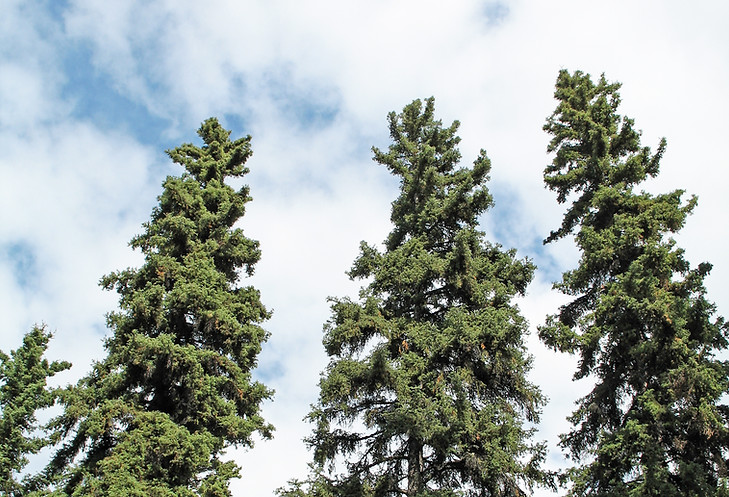Picea glauca
Background
The epigenetic response is recognized as an important component in growth and adaptation across species. The Arctic tree line is the largest transitional ecotone in the world and a site of well-documented environmental stress due to harsh climatic conditions and rising temperatures. Through our three-year study of Picea glauca (white spruce) we have assessed epigenetic response mechanisms in Picea across a latitudinal transect ranging from the northernmost point of spruce existence to a more verdant boreal forest around the Alaska North Slope.

Experiment
We quantified the global DNA methylation values in the embryonic and mature growth of the Picea from the Boreal Forest and the Black Rock forest. We compared the levels of methylation among the species grown in different latitudes, as well as compared the methylation levels between the embryonic and mature growth.

Model Organism
The model organism used was Picea glauca (white spruce). Conifers serve well as models for age-associated epigenetic adaptation in plants. Their mature leaves are exposed to multiple years of harsh environmental conditions such as cold, wind and herbivory, while their embryonic leaves lack exposure to such environmental challenges.
Sites
Samples were collected from the Boreal Forest (AK), and the Black Rock Forest (NY).

Conclusions
Our previous results indicate that whereas mature growth trends toward increasing methylation with increasing latitude, embryonic methylation is too erratic to suggest any trend. Our recent findings indicate that populations under more physical stress in the Black Rock Forest exhibit higher global DNA methylation levels, and these results corroborate our previous findings. Within the same population, methylation levels appear far more consistent between mature samples of different individuals than between embryonic samples, likely due to the heightened role methylation plays in non-stress related embryonic development. Our overall results indicate that Picea trees under more stress exhibit greater methylation, suggesting an attempt to “turn off” all but the most necessary genes in order to survive in harsh conditions. Our recent studies have analyzed the degree to which various experimental variables impact our results yielding more accurate methods for the future.

